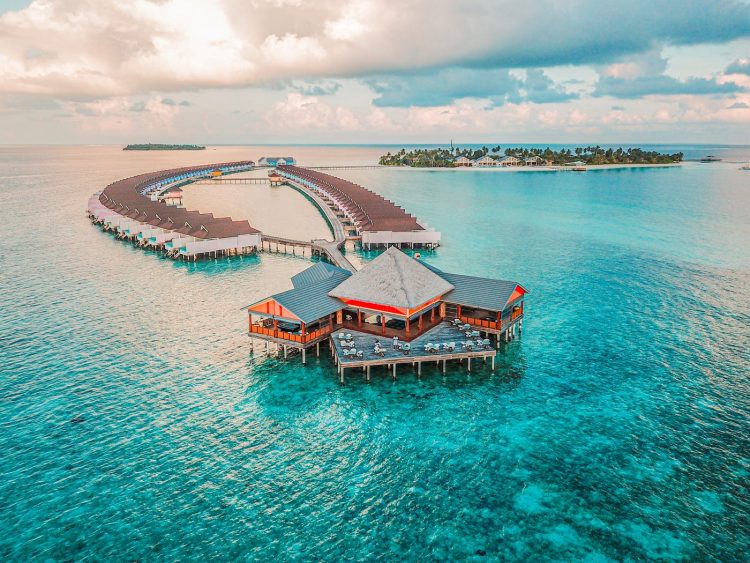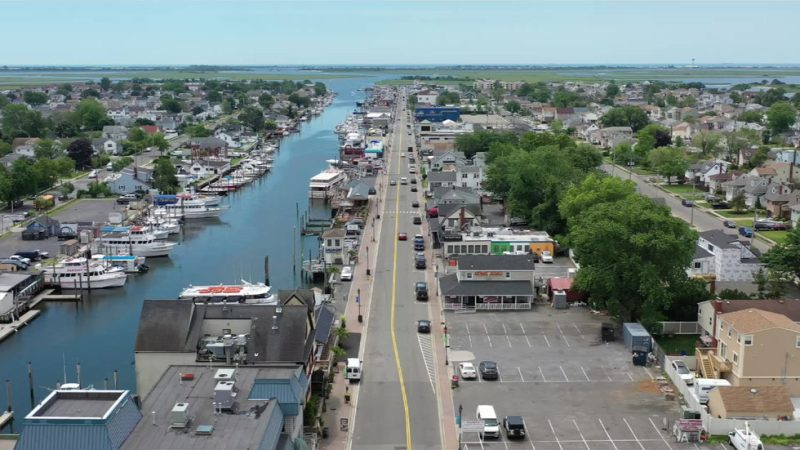The Enchanting Paradise: Unveiling the Mystique of the Maldives’ Location

Nestled in the heart of the Indian Ocean, the Maldives is a tropical haven that beckons travelers with its pristine white-sand beaches, crystal-clear turquoise waters, and vibrant coral reefs. This archipelago, comprising 26 atolls and over 1,000 coral islands, is renowned for its breathtaking natural beauty and luxurious resorts. In this article, we embark on a journey to uncover the geographical location of the Maldives and explore the wonders that make it a coveted destination for travelers around the world.
Geographical Coordinates:
The Maldives is situated between latitudes 7°6’30” N and 0°41’48” S and longitudes 72°33’19” E and 73°46’19” E. This places it southwest of India and Sri Lanka, strategically positioned in the Indian Ocean. The equator runs through the Maldives, making it a tropical paradise with a warm and inviting climate year-round.
Archipelagic Structure:
The Maldives is unique in its geographical makeup, comprising 26 natural atolls formed by coral reefs. An atoll is a ring-shaped coral reef, island, or series of islets that encircle a lagoon partially or completely. The Maldivian atolls are spread across the Indian Ocean, creating an otherworldly landscape that captivates visitors with its beauty.
Island Diversity:
Within these atolls, the Maldives boasts over 1,000 coral islands, each with its own distinct charm. The islands are classified into inhabited and uninhabited, with the former hosting local communities and the latter often serving as paradisiacal retreats for tourists. The capital city, Malé, is located on one of the islands and serves as the political, cultural, and economic hub of the country.
Strategic Location:
Despite its seemingly remote location, the Maldives has a strategic geopolitical position in the Indian Ocean. Situated along major shipping routes, the archipelago has historically been a crossroads for trade and commerce. Its position has not only contributed to its economic significance but has also shaped the cultural influences that define the Maldivian way of life.
Climate and Weather:
Thanks to its equatorial location, the Maldives experiences a tropical climate characterized by two distinct seasons – the dry northeast monsoon (Iruvai) from December to March and the wet southwest monsoon (Hulhangu) from May to October. The temperature remains relatively constant throughout the year, ranging between 77°F (25°C) and 88°F (31°C), providing an ideal environment for diverse marine life and vibrant coral reefs.
Underwater Wonderland:
One of the most captivating aspects of the Maldives is its underwater world. The coral reefs surrounding the islands are home to an incredible array of marine life, including colorful coral formations, schools of tropical fish, and majestic manta rays. The Maldives is a renowned destination for snorkeling and diving enthusiasts, offering a chance to explore the rich biodiversity beneath the azure waters.
Environmental Challenges:
While the Maldives is celebrated for its natural beauty, it faces environmental challenges, particularly due to climate change. Rising sea levels pose a threat to the low-lying islands, making the Maldives one of the most vulnerable nations to the impacts of global warming. The government and local communities are actively involved in conservation efforts to protect the delicate ecosystem and ensure the sustainability of this precious archipelago.
Tourism and Economy:
Tourism plays a pivotal role in the Maldivian economy, contributing significantly to its GDP. The allure of overwater bungalows, private island resorts, and world-class diving experiences attracts visitors seeking a luxurious escape. The tourism industry has been instrumental in the socio-economic development of the country, providing employment opportunities and fostering cultural exchange.
Cultural Tapestry:
The Maldivian culture reflects a blend of South Asian, African, and Arab influences, shaped by centuries of trade and interactions. Dhivehi is the official language, and Islam is the state religion. Traditional music, dance, and art continue to thrive, offering a glimpse into the rich cultural heritage of the Maldives.
Conclusion:
In conclusion, the Maldives is a geographical marvel that captivates the imagination with its natural beauty, cultural richness, and strategic location in the Indian Ocean. This archipelago, with its stunning coral islands, atolls, and underwater wonders, beckons travelers to experience the enchanting paradise that is the Maldives. As it grapples with environmental challenges, the Maldives stands as a testament to the delicate balance between nature and human existence, urging us to appreciate and preserve the wonders that make this destination truly unique.
Q1: Where is the Maldives located on the world map? A1: The Maldives is located in the Indian Ocean, southwest of India and Sri Lanka. It is a tropical archipelago situated between latitudes 7°6’30” N and 0°41’48” S, and longitudes 72°33’19” E and 73°46’19” E.
Q2: How many islands make up the Maldives? A2: The Maldives comprises over 1,000 coral islands, forming 26 natural atolls. These islands are scattered across the Indian Ocean and are known for their stunning white-sand beaches and vibrant coral reefs.
Q3: What is the capital city of the Maldives, and on which island is it located? A3: The capital city of the Maldives is Malé, and it is located on one of the islands. Malé serves as the political, cultural, and economic hub of the country.
Q4: Why is the Maldives considered a strategic location? A4: The Maldives is strategically located along major shipping routes in the Indian Ocean, historically making it a crossroads for trade and commerce. Its geopolitical position has contributed to its economic significance and cultural influences.
Q5: What is the climate like in the Maldives? A5: The Maldives experiences a tropical climate with two distinct seasons – the dry northeast monsoon (Iruvai) from December to March and the wet southwest monsoon (Hulhangu) from May to October. The temperature remains relatively constant, ranging between 77°F (25°C) and 88°F (31°C).
Q6: How is the Maldives affected by climate change? A6: The Maldives faces challenges from rising sea levels due to climate change. As a low-lying island nation, it is vulnerable to the impacts of global warming. Efforts are underway to address environmental concerns and protect the delicate ecosystem.
Q7: What is the primary economic contributor to the Maldives? A7: Tourism is the primary contributor to the Maldivian economy. The archipelago is renowned for its luxurious resorts, overwater bungalows, and world-class diving, attracting visitors seeking a tropical paradise experience.
Q8: How many languages are spoken in the Maldives? A8: The official language of the Maldives is Dhivehi. English is also widely spoken in the tourism industry, catering to the international visitors.
Q9: What is the traditional religion of the Maldives? A9: Islam is the state religion of the Maldives, and it plays a significant role in the daily lives and cultural practices of the Maldivian people.
Q10: What efforts are being made to preserve the Maldives’ environment? A10: The Maldives is actively involved in conservation efforts to protect its delicate ecosystem. Initiatives include coral reef preservation, waste management, and sustainable tourism practices aimed at ensuring the long-term viability of this tropical paradise.






